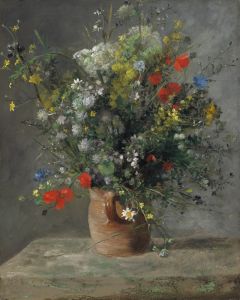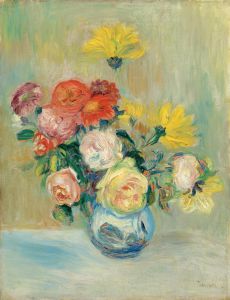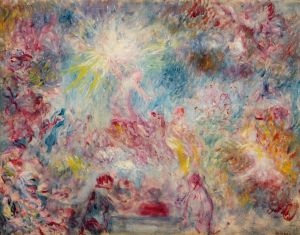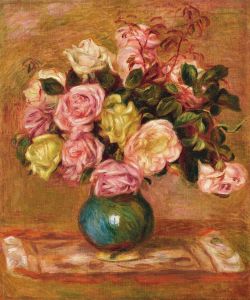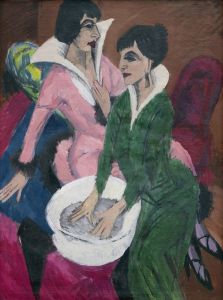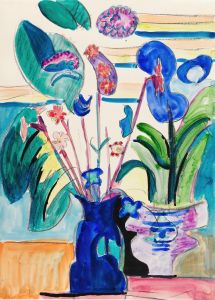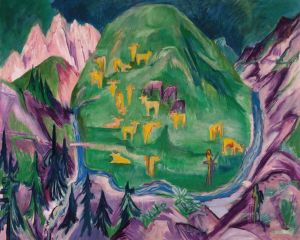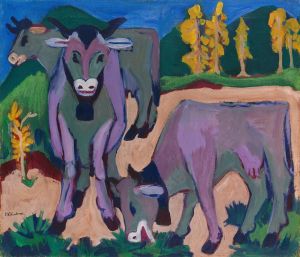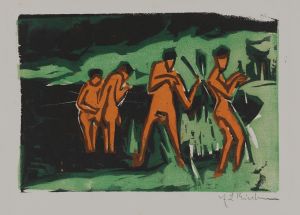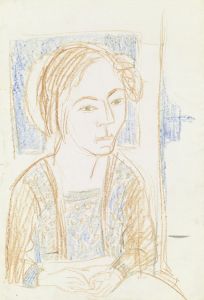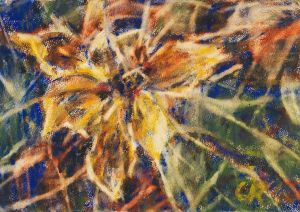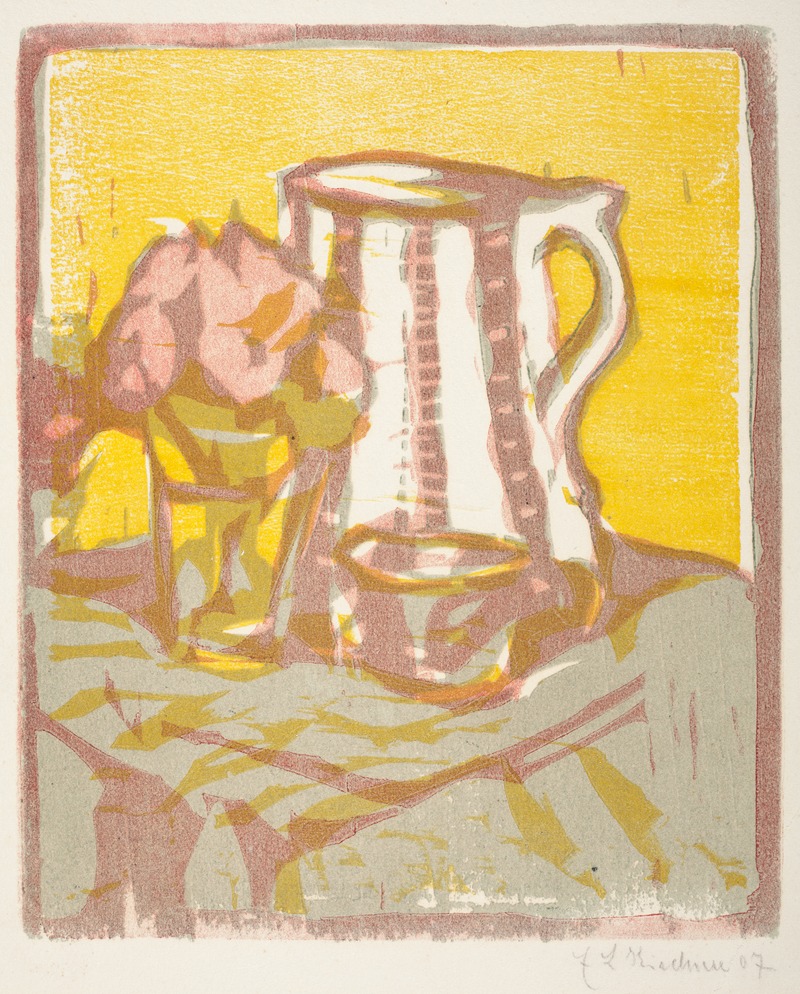
Still life with pitcher and flowers
A hand-painted replica of Ernst Ludwig Kirchner’s masterpiece Still life with pitcher and flowers, meticulously crafted by professional artists to capture the true essence of the original. Each piece is created with museum-quality canvas and rare mineral pigments, carefully painted by experienced artists with delicate brushstrokes and rich, layered colors to perfectly recreate the texture of the original artwork. Unlike machine-printed reproductions, this hand-painted version brings the painting to life, infused with the artist’s emotions and skill in every stroke. Whether for personal collection or home decoration, it instantly elevates the artistic atmosphere of any space.
"Still Life with Pitcher and Flowers" is a painting by Ernst Ludwig Kirchner, a prominent German expressionist painter and one of the founding members of the artist group Die Brücke (The Bridge). Kirchner was born on May 6, 1880, in Aschaffenburg, Germany, and became a leading figure in the early 20th-century expressionist movement. His work is characterized by bold colors, dynamic compositions, and a focus on capturing the emotional and psychological states of his subjects.
"Still Life with Pitcher and Flowers" exemplifies Kirchner's distinctive style and his interest in still life as a genre. Although the exact date of the painting is not specified, it is likely created during the height of his career in the early 20th century, a period when he produced many of his most significant works. The painting features a vibrant arrangement of flowers in a pitcher, set against a dynamic and colorful background. Kirchner's use of color is particularly notable, with bright, contrasting hues that create a sense of energy and movement within the composition.
Kirchner's approach to still life was influenced by his broader artistic goals, which included a desire to break away from traditional academic painting and to explore new ways of expressing modern life. His work often reflects the influence of non-European art forms, such as African and Oceanic art, which he admired for their directness and emotional power. In "Still Life with Pitcher and Flowers," this influence can be seen in the simplified forms and bold, expressive use of color.
The painting also reflects Kirchner's interest in the psychological and emotional aspects of his subjects. The flowers, while a common still life motif, are rendered in a way that suggests a deeper emotional resonance. The vibrant colors and dynamic composition create a sense of vitality and intensity, inviting the viewer to engage with the painting on an emotional level.
Kirchner's career was marked by both success and struggle. He was deeply affected by his experiences during World War I, which led to a period of personal and artistic crisis. Despite these challenges, he continued to produce significant work throughout his life. In 1937, the Nazi regime in Germany condemned his work as "degenerate art," and many of his paintings were removed from German museums. Kirchner moved to Switzerland, where he continued to work until his death on June 15, 1938.
"Still Life with Pitcher and Flowers" remains an important example of Kirchner's contribution to the expressionist movement and his innovative approach to still life painting. The painting is celebrated for its bold use of color, dynamic composition, and emotional depth, reflecting Kirchner's unique artistic vision and his ability to capture the essence of his subjects in a powerful and evocative way.







